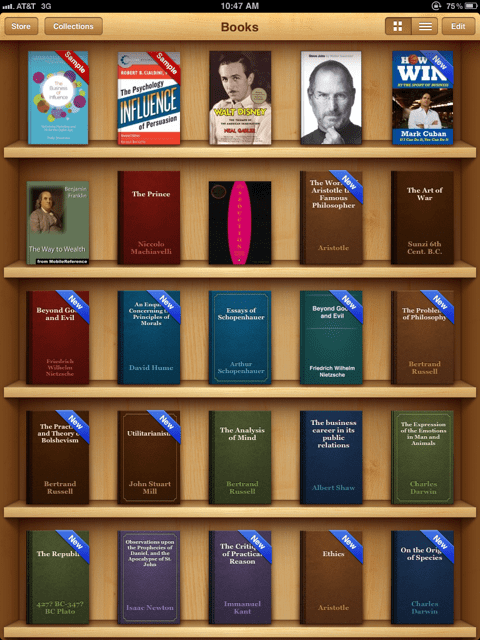 The first book I read on the subject of Influence was by Dr.Robert Cialdini. He wrote about the psychology of persuasion and explains why people say “yes” and how to apply these understandings to everyday life.
The first book I read on the subject of Influence was by Dr.Robert Cialdini. He wrote about the psychology of persuasion and explains why people say “yes” and how to apply these understandings to everyday life.
Philip Sheldrake’s book on the Business of Influence moves the conversation from influencing individuals to how organizations exert influence.
Early on, Philip’s definition of “influence” is as followed,
“We’re influenced when we think in a way we wouldn’t otherwise have thought or when we do something we wouldn’t otherwise have done.”
In an age where the marketing and public relations industry are trying to make sense of the plethora of tools and methodologies available to measure success, the Business of Influence helps question the accepted norms of measurement and instead, offers a new way of shaping an organization’s structural and cultural design by focusing on the business of influence. “If you are in business,” Sheldrake posits, “you are in the business of influence”.
True to the spirit of the book, I purchased it from iBooks and read it on my iPad, tweeting my progress to my followers and occasionally reaching out to @sheldrake to show off my digital suaveness. The books offers a lot of rethink, drawing attention to key influence trends around mobile, privacy and data ownership, buyer marketing and trying to make sense of it all; particularly to many in the C-suite who are disillusioned by the false promises and unfulfilled expectations of social media and its impact on propelling business’ forward. In this post, I have, at the risk of over-simplifying, attempted to share three key takeaways:
1. Measure what you should, not what you can
Marketing and PR remain largely unscientific disciplines where measuring outcomes remains the holy grail. There’s a well known story often recited at industry conferences that compares the industry’s attempts at measurement to that of a “drunk searching for a lost key next to a streetlight, not because that’s where he thinks he may have lost it, but because that’s where it’s easiest as there’s light!”
My colleague and Head of Ketchum Research, Dr. David Rockland (who is cited in this book) has been part of a taskforce at AMEC (Association for Measurement and Evaluation of Communication) that has attempted to give the industry’s approach to measurement teeth by developing a common set of principles, commonly known as the Barcelona Principles.
We, as communications practitioners have a responsibility to demonstrate and align the objectives of our profession to organizational and business goals. This also means steering clear of well-intentioned but superfluous measures of marketing and PR activity like Klout that offer a limited perspective on true influence. I love this quote by Katie Delahaiye (author of Measure What Matters), that Philip uses to drive home this point, “Ask ‘So What’ three times in a row and see where you get to.”
2. The emergence of a new type of ‘influence’ professional
Having started his career as an engineer, before moving over to the dark side of communications consulting, Philip is trying to bridge the gap between the “creative” profession of marketing and PR and the analytical rigor often demanded of a CMO by his boardroom colleagues.
Acknowledging the seismic shifts effected by the emergence of social media that allows organizations to listen and engage with customers directly like never before, but also allowing consumers to coalesce powerfully while removing geographical and time constraints (think the ‘Occupy movements’, the Arab Spring and the Russian Winter of 2011 as examples).
Philip recommends the creation of new occupation called the Chief Influence Officer (CInflO) to help organizations take the best advantage of social media, integrate market research systematically across all business functions and drive the business forward.
Building on the largely popular and accepted business measurement tool, the Balanced Scorecard, he also offers an “Influence Scorecard” to help the C-level understand this new influence paradigm thinking in a structure and format they would be familiar with. According to Philip, the new influence professional will have an ambidextrous mind – equally happy working his/her right brain which leads creativity and empathy skills alongside left brain which drives logical analysis.
3. Measuring influence is a business discipline, not just marketing or PR
Perhaps his most unique contribution in this book is to question the blinkered approach most organizations apply to measuring ROI from advertising, customer services, media, marketing, PR, human resources, etc. as if these units are somehow expected to peacefully co-exist while working to different goals.
By using influence as a common denominator across these groups, Philip aims to straighten out previously held imbalances between silo-ed operational units while harmonizing an interconnected network working to deliver specific business outcomes.
While I doubt that many CEOs will appoint a CInflO after reading this book, the marketing and PR industry would do well to consider its messages and take another look at the way in which we plan and deliver campaigns for clients that will allow them to “influence” the public in meaningful ways.


